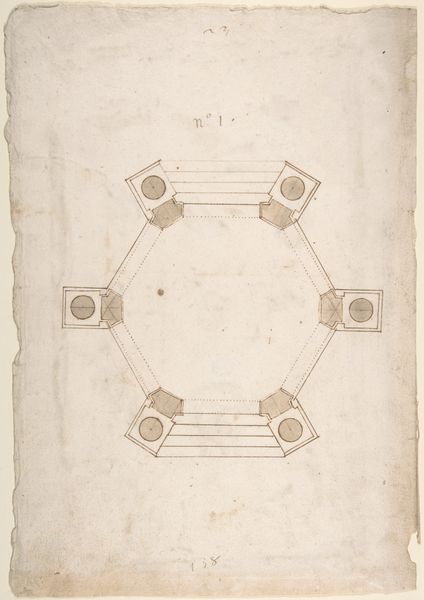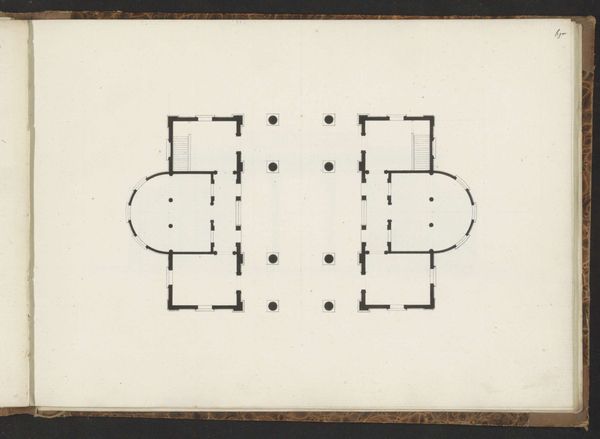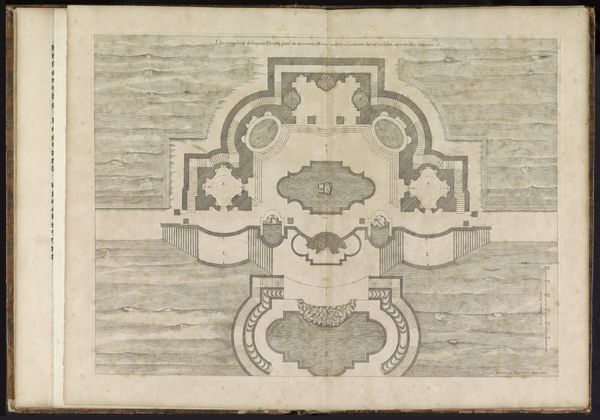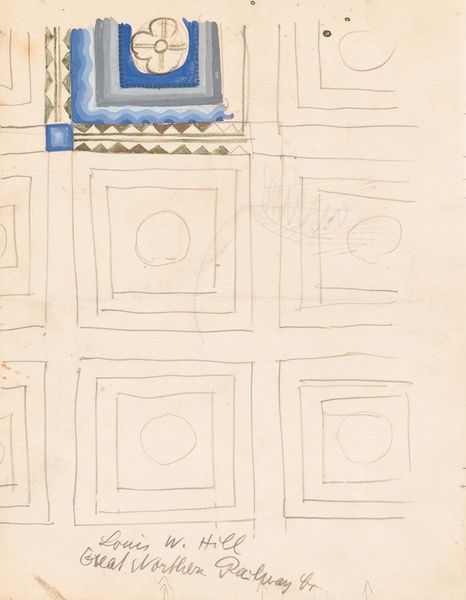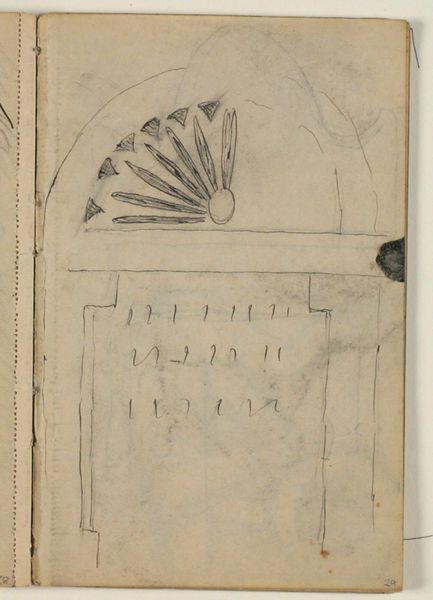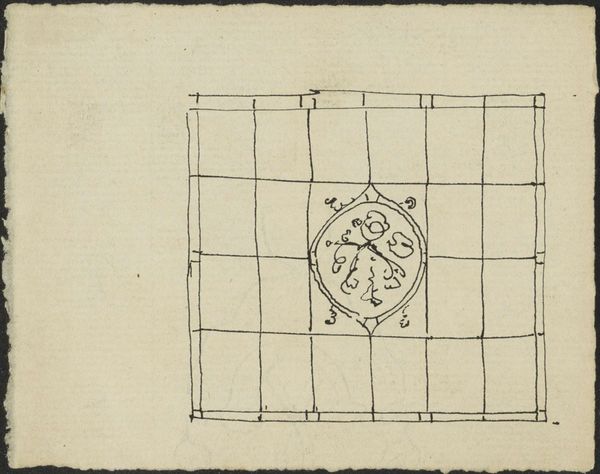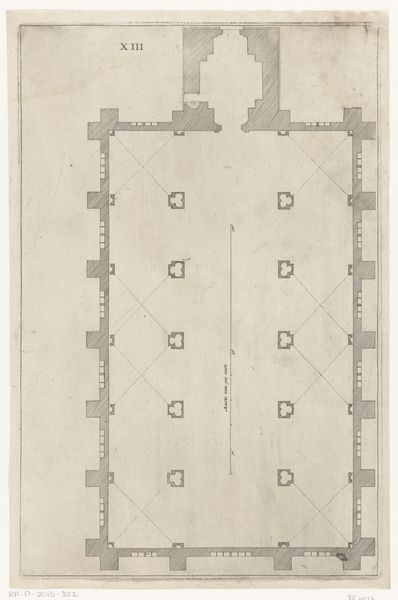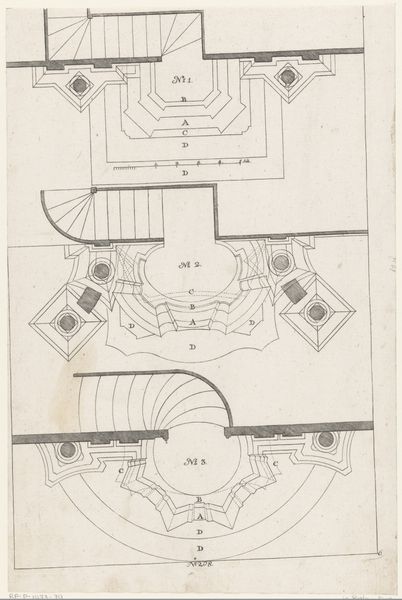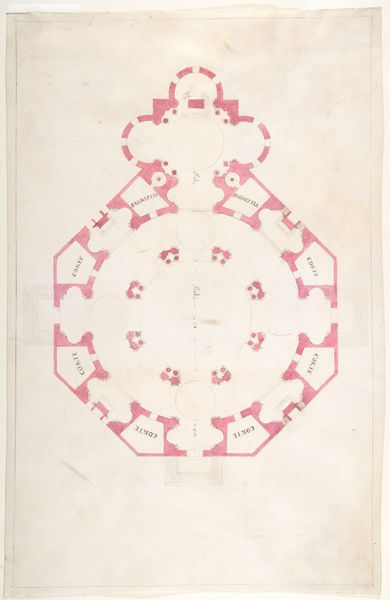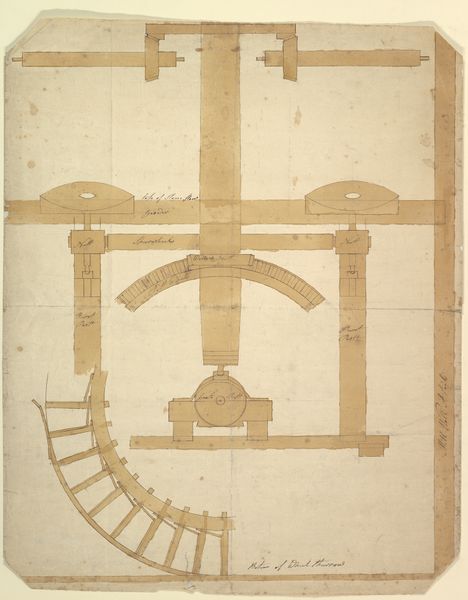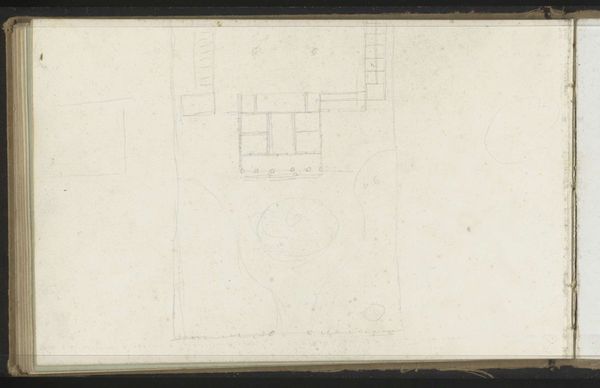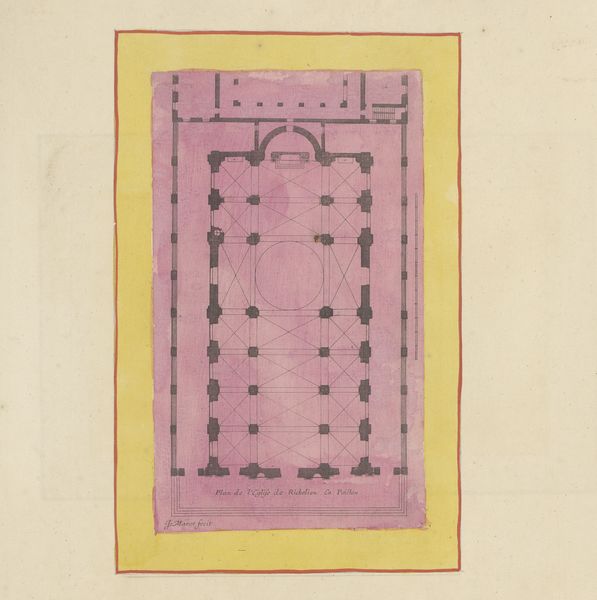
#
aged paper
#
toned paper
#
homemade paper
#
ink paper printed
#
sketch book
#
personal sketchbook
#
fading type
#
coloured pencil
#
sketchbook art
#
watercolor
Copyright: Rijks Museum: Open Domain
Editor: This is Hendrick van Beaumont's "Cirkels, rechthoeken en vierkanten," created in 1696 using watercolor and ink on paper. The aging of the paper gives it such a unique, antique feel. It feels almost like looking at an ancient blueprint. What do you see in this piece? Curator: This resonates with a coded language of ritual spaces. Look at how the circles atop the image—do they perhaps represent divine presence or hierarchy? Then we see descending geometric shapes. It suggests a choreography, perhaps the layout of a temple or some sacred stage, with each shape holding symbolic meaning in a performance or ceremony. Editor: A temple layout! That makes me think of theatre design as well. Do you think the artist had a specific purpose in mind? Curator: Potentially. This symbolic rendering could evoke specific emotional responses. The squares could represent stability, and the circles allude to unity. Given the period, what sort of philosophical or religious symbols might be prevalent? That search could help unlock even more layers of understanding. Editor: I never thought of it that way, like a symbolic stage set that provokes feelings. It's almost like a visual representation of how rituals guide our emotions. Curator: Precisely. Art in any era acts as a cultural memory. Examining it through a symbolic lens lets us recapture pieces of that past and comprehend the psychological context that inspired such order in art. Editor: Looking closely, I realize it speaks volumes about visual syntax. It makes me eager to explore beyond surface aesthetics and learn hidden cultural scripts and visual language. Curator: I concur! You are already starting to unravel the fascinating dialogues woven by images.
Comments
No comments
Be the first to comment and join the conversation on the ultimate creative platform.
